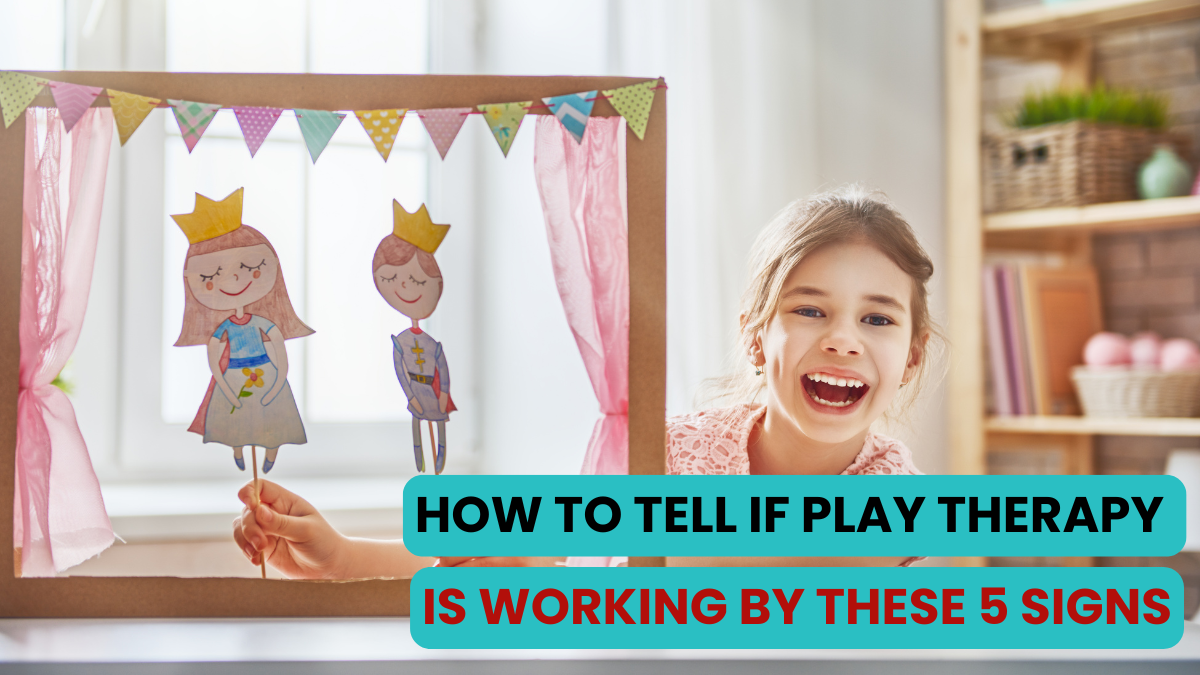5 Signs Play Therapy Is Working

Have you ever walked out of a play therapy session wondering if anything is really working? Maybe you’re second-guessing your skills, feeling the pressure from parents, or stuck trying to decode a child’s symbolic play. If you’ve been there, you’re not alone.
In this week’s post, I’m diving into one of the most common concerns play therapists face — how to know if play therapy is actually making a difference. Based on the discussions in my Play Therapy Academy, we’ll break it down into five clear signs that can help you assess progress more confidently and stay grounded in your work.
1. Increased Regulation in the Playroom
Watch for improvements in how the child regulates their emotions and behaviors during sessions. Are transitions getting easier? Is the child sustaining play longer or inviting you in more consistently? These are often signs of emotional safety and engagement with the therapeutic process, supported by the neuroscience of play and co-regulation.
2. Shifts in Play Themes Over Time
Subtle changes in the themes a child expresses during play sessions can indicate emotional processing. Maybe chaotic play becomes more organized, or aggression themes begin to shift into healing or resolution-focused scenes. Each play therapy model offers a lens to interpret these themes differently — so anchor your observations in your theoretical model.
3. Testing Boundaries and the Relationship
Children often test boundaries once they feel safe. This might show up as limit-testing behaviors or challenges in session. Rather than a setback, this can be a signal that they trust you enough to explore tough dynamics. Responding with congruence, unconditional positive regard, and empathy helps facilitate deeper healing.
4. Feedback from Parents and Caregivers
Caregiver reports can be a goldmine for gauging progress. Has the frequency, intensity, or duration of the child’s symptoms decreased? Are there improvements in sleep, meltdowns, or attachment behaviors? Build strong relationships with parents through regular sessions to gain these insights and reinforce their role as co-regulators.
5. Relationship and Connection with the Therapist
One of the strongest indicators of progress is the child’s growing ability to connect with you. Are they making more eye contact, inviting you into their play, or allowing you to witness their emotional world? This emotional safety is what allows the therapeutic powers of play to do their work.
Progress in play therapy often shows up in subtle ways. Stay tuned to changes in play, regulation, and relationships — and don’t forget to ground your work in theory and check in with caregivers regularly. Above all, trust the process and remember: sometimes, simply being present is the most healing gift you can offer.
Interested in taking your play therapy skills to the next level?
Join me in the Play Therapy Academy, my online group program where we explore case conceptualization, theoretical models, and clinical skills together — all in a supportive, learning-focused community. Click here to schedule a free consultation and learn more!
Categories: : Congruence, Play Therapy, Play Therapy Academy, Play Therapy Elevation Circle, Play Therapy Model, Play Therapy Themes, Podcast, Therapeutic Rapport
 Cathi Spooner
Cathi Spooner 
